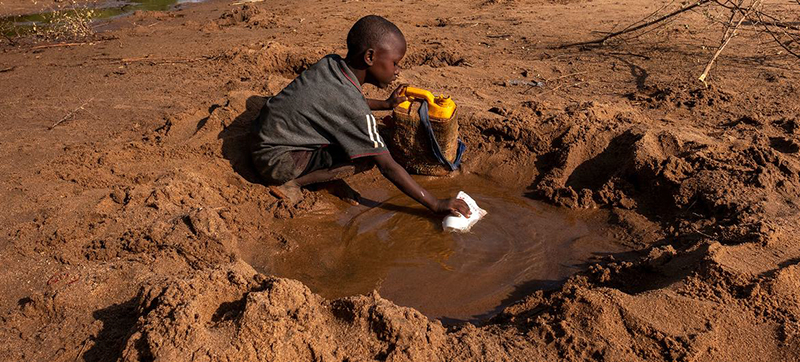 Horn Of Africa
Horn Of Africa WFP scales up support for millions who ‘cannot wait’ for food aid amid Horn of Africa drought
New York: As the threat of famine looms in the Horn of Africa, the World Food Programme (WFP) announced on Friday that it is scaling up operations to support millions going hungry who “cannot wait” for assistance.
The region is in the grip of a historic drought, brought on by four consecutive failed rains. The crisis has left some 22 million people across Ethiopia, Kenya and Somalia struggling to find enough to eat, with numbers expected to rise.
Livestock are dying, and there are critical shortages of water and food. More than a million people have fled their homes and are now living in crowded camps, where humanitarians are scrambling to meet the overwhelming needs.
No end in sight
WFP chief David Beasley on Thursday wrapped up a visit to Somalia, where the risk of famine is high.
More than seven million people there, nearly half the population, are acutely food insecure, and 213,000 are already facing famine-like conditions.
Mr. Beasley travelled to the southern city of Baardheere where he met families, including malnourished children and their mothers, who have been forced to leave home and travel long distances to seek humanitarian aid, amid ongoing conflict.
“People here have been waiting years for rain – but they cannot wait any longer for life-saving food assistance. The world needs to act now to protect the most vulnerable communities from the threat of widespread famine in the Horn of Africa,” he said.
“There is still no end in sight to this drought crisis, so we must get the resources needed to save lives and stop people plunging into catastrophic levels of hunger and starvation”.
Food and cash assistance
WFP said the drought is expected to continue in the coming months as a fifth poor rainy season is forecast later this year.
The agency is doing everything possible to support the most vulnerable people, but urgently requires around $418 million over the next six months to meet the increasing needs.
Meanwhile, WFP is focused on using available funds to increase assistance in the worst-hit areas. The aim is to target some 8.5 million people across the region, up from 6.3 million at the start of the year.
Staff are providing food and cash assistance to families, in addition to distributing fortified foods to women and children as malnutrition rates spiral. Cash grants and insurance schemes are also helping households to buy food to keep their livestock alive, or to compensate them when they die.
Support for Somalia
Relatedly, $10 million has been allocated from the UN’s Central Emergency Response Fund (CERF) to ramp up the drought response in Somalia.
UN Humanitarian Coordinator Martin Griffiths warned on Friday that time is running out for people in the country.
“If we don’t step up in force now, it’ll run out and the malnourished children are likely to die first,” he said.
“This new funding will help humanitarian agencies get supplies and staff in place as soon as humanly possible to help avert a further catastrophe in Somalia. But it is no solution. We need all hands on deck and all resources mobilized to prevent famine”.
CERF has so far contributed a total of $41 million to the drought response in Somalia this year.
The funding has been used to support food and nutrition interventions, and to deliver healthcare, water and sanitation, protection, shelter, and education to people in need.
Support Our Journalism
We cannot do without you.. your contribution supports unbiased journalism
IBNS is not driven by any ism- not wokeism, not racism, not skewed secularism, not hyper right-wing or left liberal ideals, nor by any hardline religious beliefs or hyper nationalism. We want to serve you good old objective news, as they are. We do not judge or preach. We let people decide for themselves. We only try to present factual and well-sourced news.







